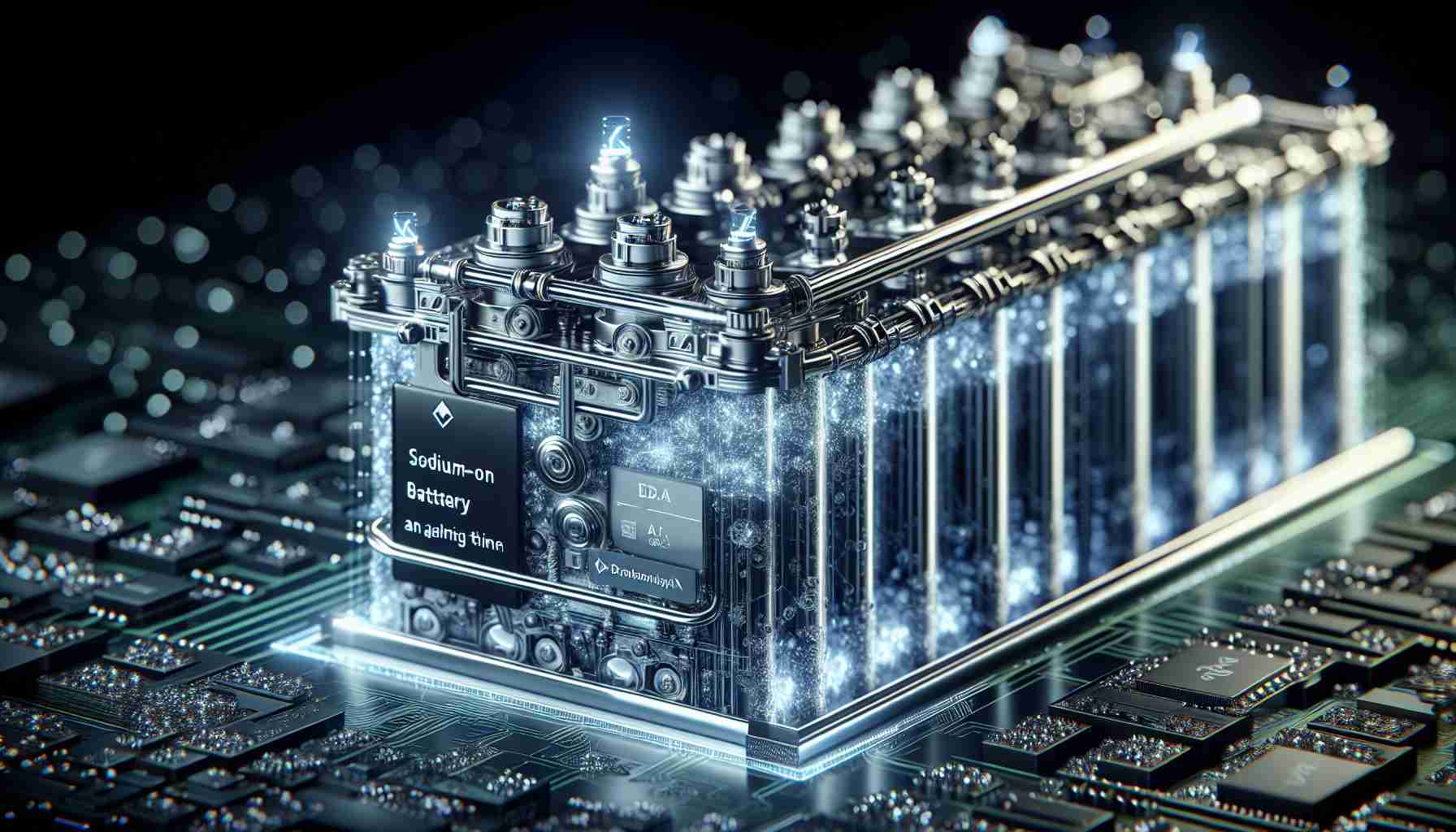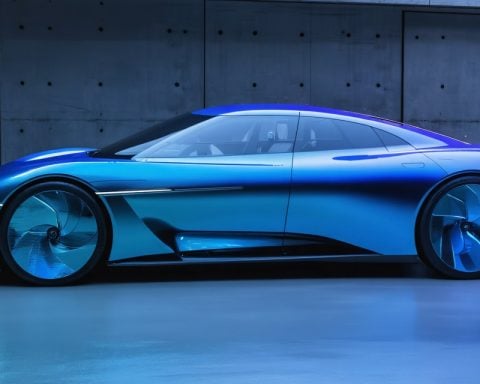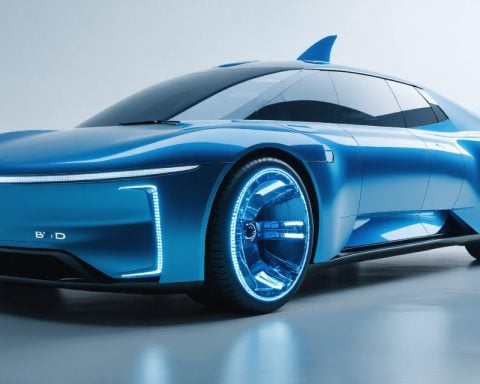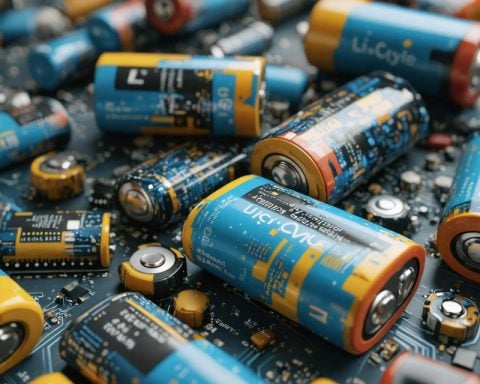Revolutionizing Energy Storage
Sodium-ion batteries are on the brink of transforming the energy storage landscape, offering a sustainable and cost-effective alternative to conventional lithium-ion batteries. Utilizing sodium, a cheap and abundant resource, these batteries promise a new era for affordable electric vehicles and efficient home energy solutions.
Research has shown significant strides in enhancing the performance of sodium-ion batteries. For instance, recent findings reveal a new material with an impressive energy density of 458 Wh/kg, marking a notable improvement over earlier versions. The key to this leap forward lies in innovative modifications to their chemistry, addressing challenges such as low durability and energy density.
In collaboration with major Chinese manufacturers like CATL and BYD, this technology is quickly gaining traction, potentially powering a substantial number of electric vehicles worldwide by 2033. However, hurdles remain, particularly concerning sodium’s heavier mass compared to lithium, resulting in lower energy density. Advances at Cornell University and the University of Houston indicate promising solutions that could mitigate these issues.
As the global market adapts, the competition between lithium and sodium-ion technologies heats up. A recent drop in lithium-ion battery prices has highlighted the need for sodium-ion batteries to carve out their niche. With their lower cost and sustainable sourcing, sodium-ion batteries are poised to become a vital part of the future energy equation.
The Future of Sodium-Ion Technology: Broader Implications
The emergence of sodium-ion batteries heralds not only a shift in energy storage technology but also a broader societal impact. As nations grapple with climate change and energy security, the transition to more affordable and sustainable energy systems becomes critical. The widespread adoption of sodium-ion batteries could significantly reduce dependence on lithium, a resource often fraught with geopolitical tensions and environmental concerns tied to its extraction.
In the cultural realm, the shift towards sodium-ion technology may encourage public acceptance and enthusiasm for electric vehicles (EVs) and renewable energy solutions. With lower costs translating to more accessible EVs, a larger segment of the population can participate in the transition to greener transportation. This democratization of technology can spark a massive cultural shift towards sustainability, pushing consumer behavior and lifestyle choices in more eco-friendly directions.
From an environmental perspective, however, it’s crucial to consider the long-term implications of producing sodium-ion batteries. While sodium is abundant, the mining and processing of materials needed for battery production still pose environmental challenges. Companies must prioritize sustainable practices to ensure that the growth of this technology does not replicate the ecological harm associated with lithium extraction.
Looking ahead, identify potential future trends in the grid and energy infrastructure. The efficiency of sodium-ion batteries could facilitate the integration of renewable energy sources, aiding in stabilizing power supply and enhancing grid resilience. Overall, as innovations unfold, sodium-ion batteries may play a pivotal role in shaping the global economy, specifically in sectors focused on green technology and infrastructure development, ultimately contributing to a more sustainable future.
Unlocking the Future: Why Sodium-Ion Batteries Are Set to Dominate Energy Storage
The Rise of Sodium-Ion Batteries
Sodium-ion batteries are emerging as a game-changing technology in the energy storage sector, offering a more sustainable and economically viable alternative to traditional lithium-ion batteries. Their innovative use of sodium—an abundant and inexpensive resource—positions them as a potential cornerstone for affordable electric vehicles (EVs) and efficient home energy solutions.
Key Innovations and Performance Enhancements
Recent advancements in sodium-ion battery technology have led to remarkable improvements in energy density. For instance, researchers have developed a new material that boasts an energy density of 458 Wh/kg, a significant enhancement over previous iterations. This progress is attributed to novel modifications in battery chemistry, which have effectively tackled previous limitations such as poor durability and lower energy density.
Market Trends and Collaborations
Major collaborations with Chinese manufacturers, including CATL and BYD, are accelerating the development and adoption of sodium-ion batteries. This partnership signals a potential shift in the EV market, with projections suggesting that sodium-ion batteries could power millions of electric vehicles globally by 2033.
As the demand for sustainable energy solutions continues to rise, the appeal of sodium-ion technology is becoming increasingly pronounced. Notably, the recent decline in lithium-ion battery prices has intensified competition, emphasizing the need for sodium-based alternatives to establish their presence in the market.
Pros and Cons of Sodium-Ion Batteries
Pros:
– Cost-Effectiveness: Sodium is significantly cheaper than lithium, reducing production costs.
– Abundance: Sodium is widely available, minimizing supply chain vulnerabilities.
– Environmental Impact: The comparative sustainability in sourcing sodium can lead to a lower carbon footprint.
Cons:
– Energy Density: Sodium-ion batteries currently have lower energy density than lithium-ion counterparts, which may limit their application in specific high-performance contexts.
– Weight: The heavier mass of sodium can lead to increased overall battery weight, affecting vehicle design and efficiency.
Future Predictions and Insights
Experts predict that sodium-ion batteries will play a crucial role in the ongoing evolution of the global energy storage market. As technologies continue to mature, improvements in energy density and battery longevity will enhance their competitiveness against lithium-ion solutions.
Additionally, the growing focus on sustainability and reducing reliance on finite resources could further accelerate the adoption of sodium-ion batteries in various applications, from consumer electronics to large-scale grid storage.
Compatibility and Use Cases
Sodium-ion batteries are particularly suited for applications where weight and energy density are less critical, such as in stationary energy storage systems or electric vehicles aimed at urban environments. As the technology progresses, we can expect broader adoption across diverse sectors, including renewable energy storage, where their ability to integrate with solar and wind technologies can facilitate lower carbon energy grids.
Conclusion
In conclusion, as sodium-ion battery technology advances, it presents an exciting alternative that could redefine energy storage solutions. With their inherent advantages and ongoing innovations, they are poised to complement—if not challenge—the dominance of lithium-ion batteries in the market. For more insights on this emerging technology and its impact on energy storage, visit Example.

















